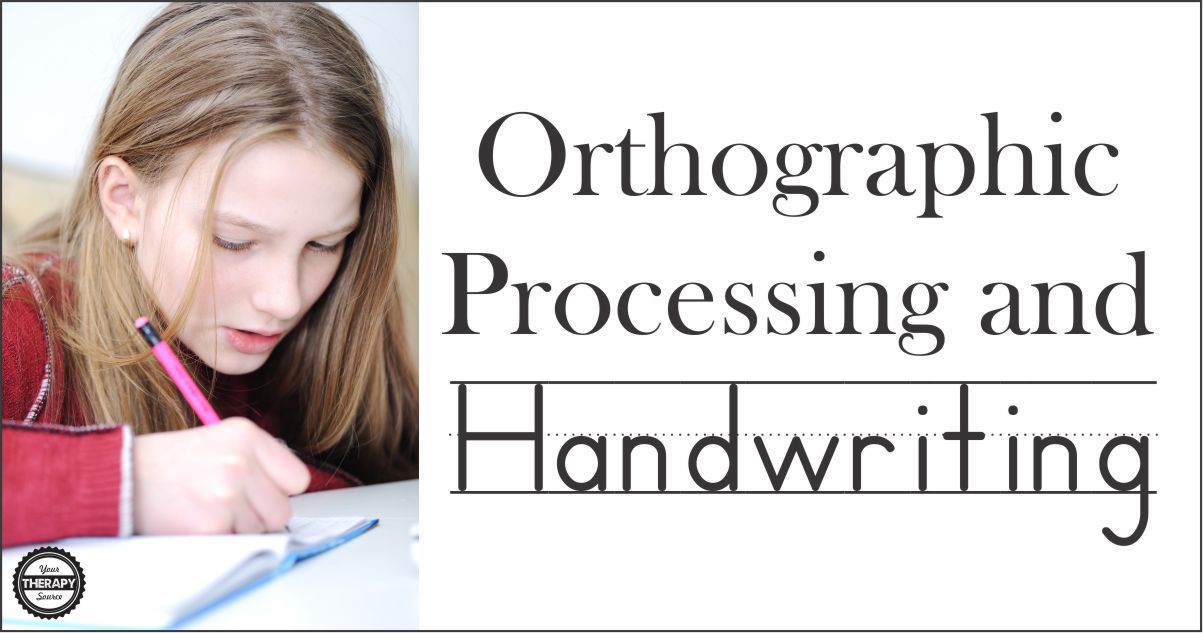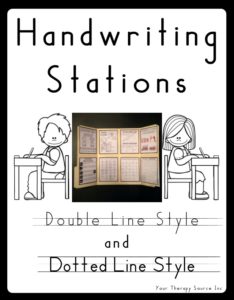Orthographic Processing and Handwriting
 Orthographic Processing and Handwriting
Orthographic Processing and Handwriting
Handwriting evaluations usually include legibility, speed, spacing and pencil grip but do you consider orthographic processing? Orthographic processing is the ability to understand and recognize writing components such as spelling, capitalization, and punctuation. Students with weak orthographic processing rely very heavily on sounding out common words that should be in memory, which can result in deficiencies in decoding skills and written expression. In addition, there can be difficulties with letter recognition and letter reversals. If a student does not have the visual memory skills to recognize the shape and orientation of a letter, they are more likely to make reversal errors.
Cognitive Neuropsychology published research on how deficits in orthographic processing affect movement production during word writing. The participants included children with dyslexia and dysgraphia. To assess the impact of spelling process disorders on handwriting, participants had to write on digital tablets different categories of words: regular and irregular, common and rare, sensical (ex: futur) and pseudo, non-sensical words (ex: furut).
The results indicated the following:
- writing irregular words and pseudo-words increased movement duration and dysfluency indicating that the spelling processes were active while the children were writing the words.
- the impact of these spelling processes was stronger for the children with dyslexia and dysgraphia.
- most dyslexic/dysgraphic children presented similar writing patterns.
- the act of writing irregular and pseudowords had a particularly noticeable impact on the hand movements of dyslexic children. When the spelling was so difficult it impaired some children’s efforts to write resulting in irregular, and sometimes, unreadable shapes.
The researchers concluded that the interaction between orthographic and motor processing add up to a significant cognitive load that may affect the handwriting of the children with dyslexia/dysgraphia.
Read more about spelling, handwriting and dyslexia.
References:
ACT Government and Training. Learning Difficulties Factsheet 7: What is orthographic processing? Retrieved from the web on 12/4/17 at https://www.education.act.gov.au/__data/assets/pdf_file/0019/714340/Learning-Difficulties-Factsheet-7.pdf
CNRS. (2017, November 28). Dyslexia: When spelling problems impair writing acquisition. ScienceDaily. Retrieved December 4, 2017 from www.sciencedaily.com/releases/2017/11/171128112649.htm
Kandel, S., Lassus-Sangosse, D., Grosjacques, G., & Perret, C. (2017). The impact of developmental dyslexia and dysgraphia on movement production during word writing. Cognitive Neuropsychology, 34(3-4), 219-251.
Handwriting Stations includes the materials to create a handwriting station on a tri-fold or in a folder. The station includes proper letter formation for capital and lower case letters, correct posture, pencil grip, warm up exercises, letter reversals tips and self check sheet. In addition, there are 27 worksheets for the alphabet and number practice (Handwriting without Tears® style and Zaner-Bloser® style). This download is great for classroom use, therapy sessions or to send home with a student. Find out more information.





